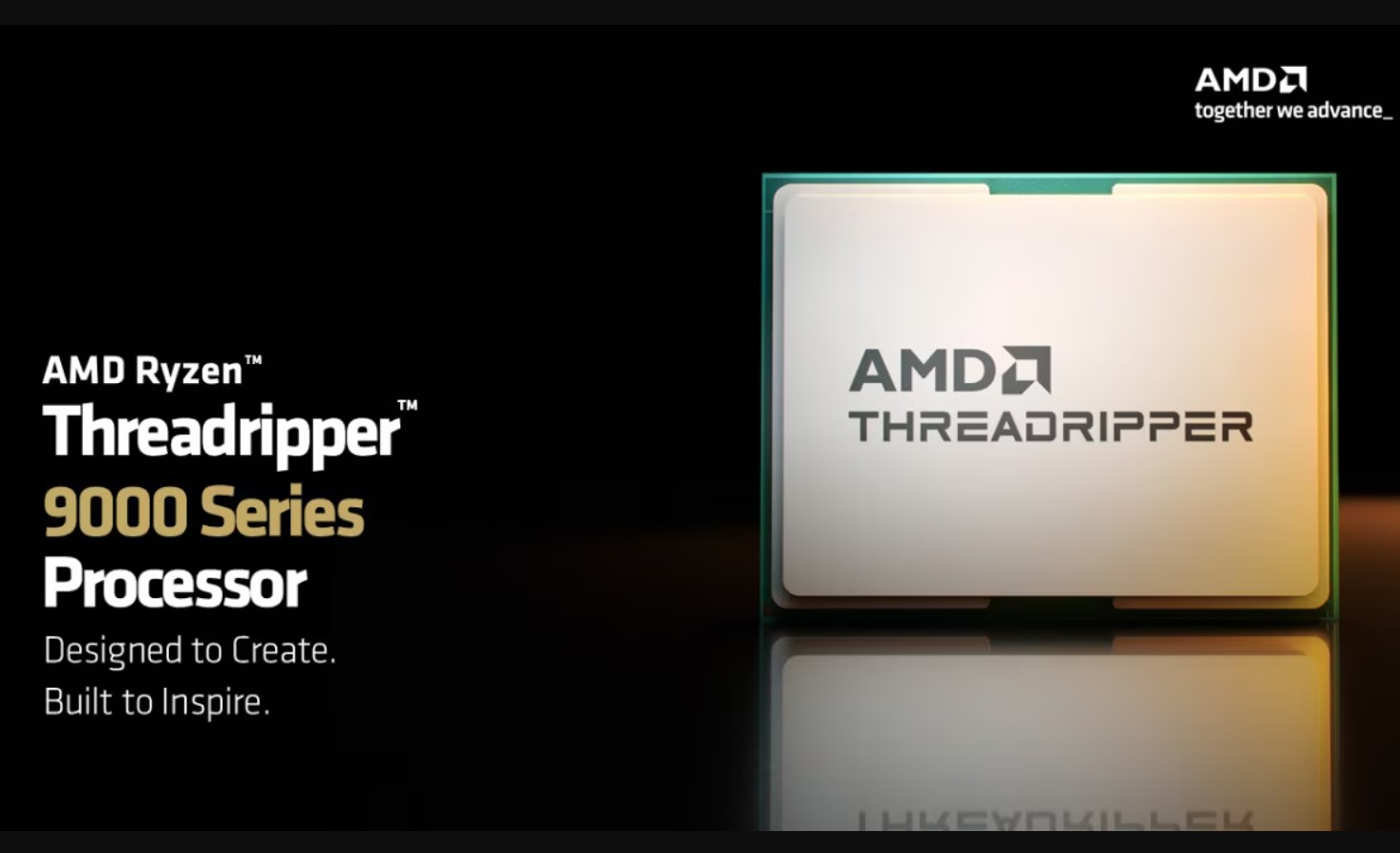- AMD Threadripper Pro 9995WX outpaces Intel Xeon W9-3495X significantly in Premiere Pro benchmarks
- Video editing PC workloads benefit from AMD’s higher core density and sustained throughput
- Measured gains in DaVinci Resolve and After Effects highlight Threadripper’s content creation strength
AMD’s Threadripper PRO 9000WX series has delivered a blow that Intel’s Xeon workstation CPUs may not recover from.
Benchmarks from Puget Systems covering real-world content creation applications found the new Threadripper chips outperformed Intel’s Xeon W-3500 series across nearly every category, often by wide margins which left little room for excuses or rebuttal.
At the top of AMD’s stack is the 96-core 9995WX, priced at $11,700, delivering a Cinebench 2024 multi-core score of 7,508, 27% ahead of the previous-gen 7995WX and a staggering 125% faster than Intel’s most powerful Xeon tested.
Threadripper pulls ahead?
Even AMD’s mid-range 9975WX with 32 cores ($4,100) routinely beat Intel’s 60-core w9-3595X in workloads like Blender, DaVinci Resolve, and Unreal Engine compiling.
Intel’s best simply couldn’t keep up, either in raw throughput or clock speed, and often looked inefficient by comparison.
In Photoshop, where high single-core speed matters, AMD's 16-core 9955WX came out on top with an overall score of 11,384 - whereas Intel's Xeon w5-3535X managed only 6,801, barely 60% of AMD’s best showing.
Even the weakest Threadripper 9000 chip tested outperformed every Intel CPU across the board in Adobe’s suite of creative tools, including Premiere Pro and After Effects.
In After Effects 3D workloads, the 9955WX again dominated with a 9% lead over the 9995WX and a 40% advantage over Intel’s top performer.
DaVinci Resolve further emphasized Intel’s problem: the 9975WX scored 180 in Intraframe processing, a 10% improvement over AMD’s previous generation, while Xeons lagged by more than 20%.
AI-related benchmarks using LLaMA.cpp showed consistent scaling on AMD, with the 9995WX processing 16% more tokens per second than its predecessor.
Intel’s Xeon parts trailed even lower-tier Threadripper models here, further underlining their inefficiency in modern workloads.
Workstation tasks like compiling in Visual Studio or shader building in Unreal Engine showed predictable trends.
The 9995WX and 9985WX completed these tasks dramatically faster, with the former finishing Unreal Engine compilation in 68% of the time required by the previous generation.
Intel’s Xeons simply couldn’t compete; even their 60-core chip was outpaced by AMD’s 32-core offering.
While AMD's new processors come with a 10–20% price increase over the 7000WX line, the performance uplift and DDR5-6400 support help justify it.
In nearly every test, AMD’s dominance was clear and systematic, leaving Intel’s Xeon series looking outdated and overpriced.
You might also like
- These are the fastest SSDs you buy right now
- Take a look at some of the best external hard drives
- Watch how Chinese are converting thousands of Geforce RTX 5090 cards into AI accelerators and there's nothing Nvidia can do to stop it
.png)











 English (US) ·
English (US) ·